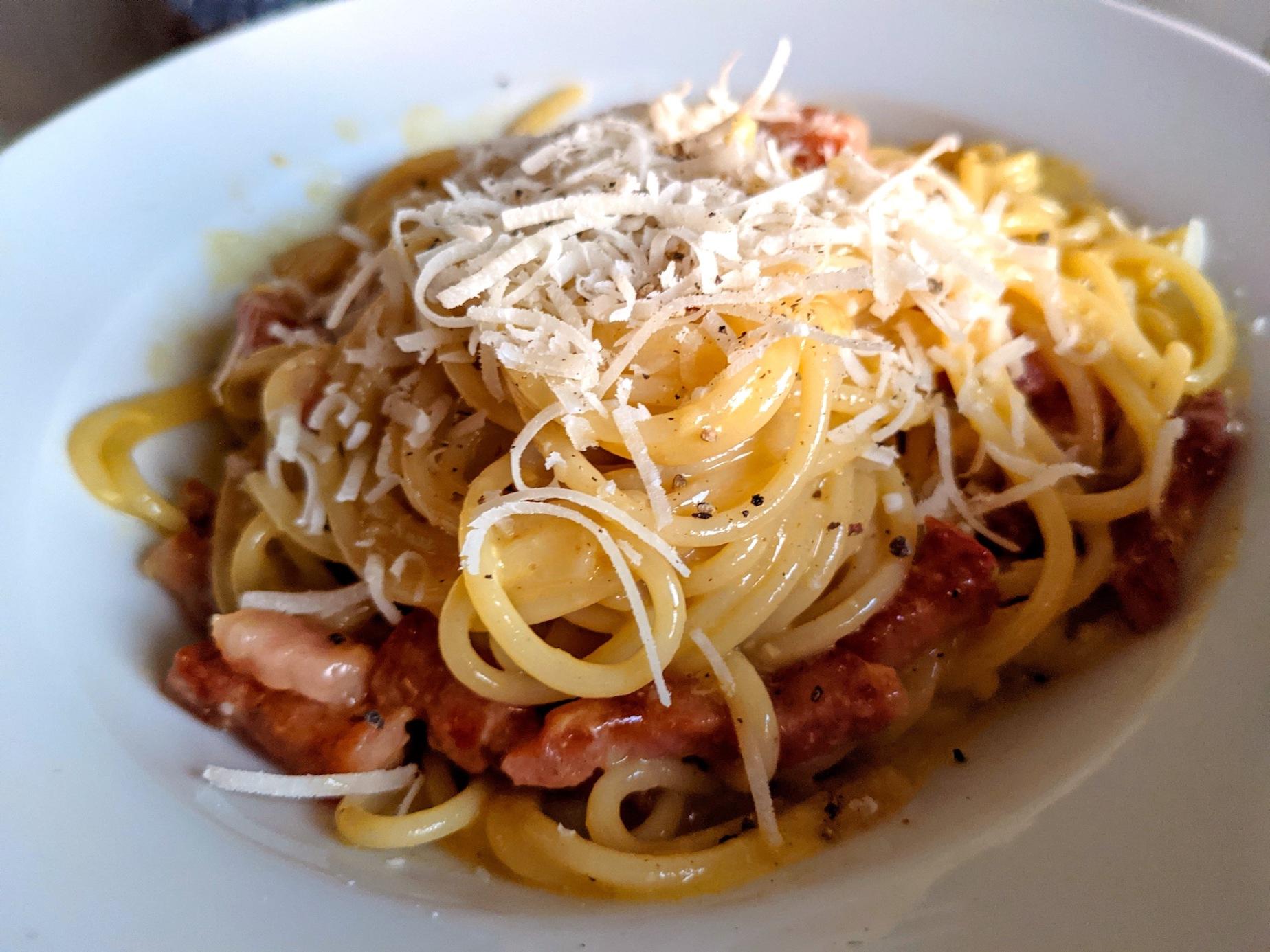Spaghetti carbonara
Updated in
Ingredients
- 250 g pasta
- Olive oil
- 1 clove garlic, sliced
- 3 eggs
- 60 g parmesan, grated, plus more for serving
- 250 g bacon cubes
- Salt
- Pepper
Preparation
Carbonara is a simple dish, but not an easy one. Its success depends on timing and technique, two things that can’t be adequately described in a recipe. If you use too much parmesan, it gets salty and dry. If you cook the bacon too early, it becomes too hard. If the heat is too high, the eggs harden and you get a spaghetti omelette.
- Boil the pasta with a generous pinch of salt.
- Heat olive oil in a pan on medium heat.
- While the pan heats up, whisk together the eggs, around the parmesan (more is not better), and a lot of pepper. Twist that pepper mill until your wrist hurts.
- Shortly after you start cooking the pasta, heat the garlic in olive oil for around 2 minutes.
- Remove the garlic from the pan, and cook the bacon cubes. Don’t let them get too crispy.
- When the bacon cubes are ready, take the pan off the heat.
- When the pasta is ready, add it to the pan with some of the salty pasta water. Mix the pasta with the bacon grease, and let the water evaporate.
- Add the eggs, parmesan and pepper to the pan, and mix everything together. Don’t let the eggs harden.
- Top with pepper and parmesan, and serve.
Steps 7 and 8 are the most important. Pasta water controls the saltiness and the texture of the sauce. Temperature is important too. If the pan is too hot, the eggs will harden and clump around the pasta. If it’s not hot enough, pasta water won’t evaporate, and your sauce will be too runny. The only way to get this right is to practice, and trust me, it’s worth the reward.
If the dish tastes bland, use more pasta water, and add more pepper. If it’s too dry, you probably used too much parmesan. Bacon grease also plays an essential role here. Bigger, softer bacon chunks are a massive improvement.